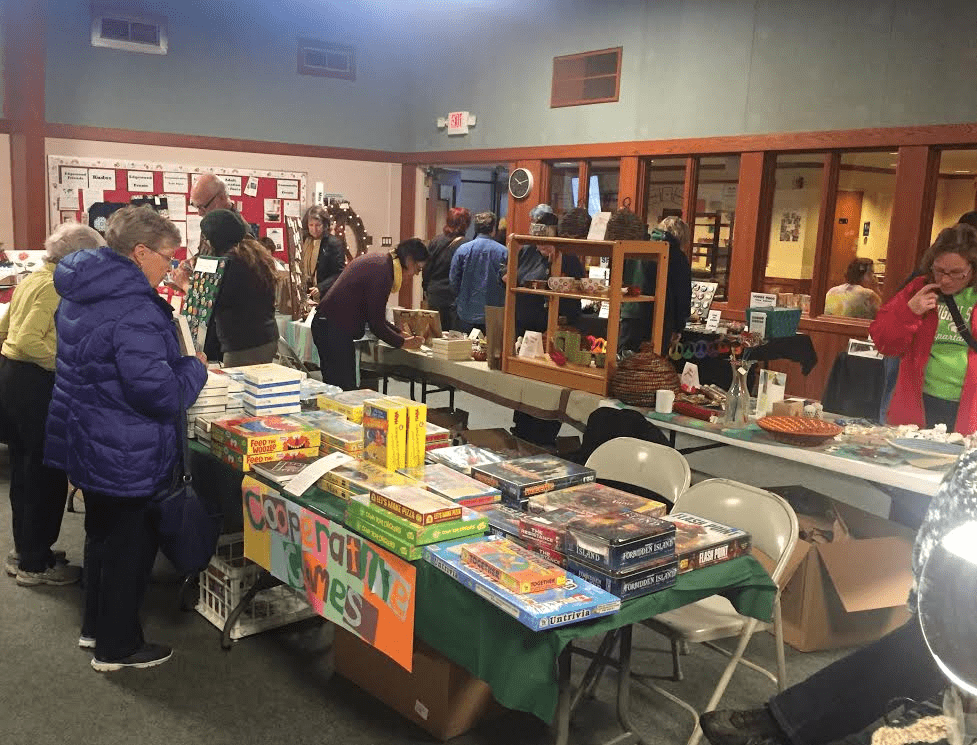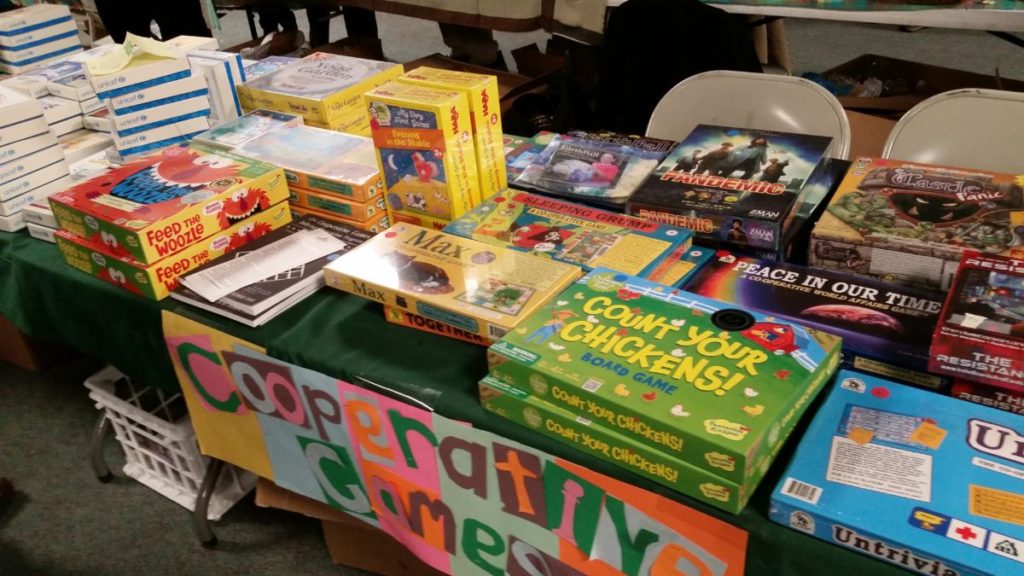- Cooperative Games reduce aggression in young children. See the study “Cooperative Games in Young Children: A Way to Modify Aggression” by April Bay Hinitz et al; 1994; University of Nevada, Reno.
- Cooperative Games increase pro-social skills including sharing and kindness. See studies by Terry Orlick and others.
- Though cooperative games have not been studied extensively, as they are not widely known about, they are both a form of cooperative learning and of course a form of play. There’s an enormous amount of scholarship and research documenting the benefits of both cooperative learning (see for example the brothers Johnson at the University of Minnesota) and the benefits of play (see for example the work of Peter Gray or Stuart Brown.) Benefits of cooperative learning include increased mastery of content and reduced classroom management and discipline problems while play is known to be essential for mental health and intellectual development. Cooperative play has all of the benefits of cooperative learning as well as play, since it is a form of both!
- Cooperative games have been shown to be useful in therapy situations to enhance communication skills of autistic and socially withdrawn children.
- Cooperative games are inclusive so they promote a “sense of belonging”. The importance of a sense of belonging in academic achievement has been documented by Jeffrey Cohen at Stanford and others.
- Cooperative games are fun as documented by Terry Orlick and others. Fun and happiness are beginning to be appreciated as important in their own right on humanitarian grounds. Consider for example the UN declaration on the right of children to play. Also positive psychology is beginning to document the value of happiness in human health.
- Cooperative games build empathy because the underlying ethic is mutual care and concern as opposed to the dog-eat-dog, “nice guys finish last” ethos that characterizes hypercompetitive society.
- Cooperative games help develop problem-solving skills.
- Cooperative play gives children practice working together which prepares them for cooperative learning and collaborative learning teaching strategies.
- Cooperative games provide a break from excess competition. (As documented in No Contest, The Case Against Competition, competition has many downsides including that it increases anxiety in children and reduces equity. Yet most schooling is competitively structured. For this reason it is important to give children a break from the destructive effects of excess competition.)
- Cooperative games can promote group cohesion and group identity.
- They are inclusive so no one wastes valuable class time sitting idly on the sidelines.
- Many cooperative games are physically active games so they help children stay physically fit.
- They allow kids practice taking turns and being courteous, which is a valuable life skill.
- They prepare kids for working life where team-playing is the norm.
- They prevent emotional meltdowns/embarrassment/meanness that commonly occur in competitive situations.
- Cooperative games build healthy relationships because they allow children to interact respectfully with one another and enjoy one another’s company.
- When adults give children cooperative play opportunities, they communicate to children that cooperation is a valued social norm. Thus cooperative games help build a positive social climate, which feels safe and enjoyable for children.
- Cooperative games open the heart because they activate mutual appreciation, and feelings of love and kindness. Thus they are a form of holistic learning (which can be summarized as learning that involves hand, heart, and mind.)
- Because children learn through play, children learn to cooperate through cooperative play. Cooperation is an essential social and emotional skill with a thousand benefits including that it is necessary for social relationships, success in the workplace, and for peaceful living in the larger society.
- Cooperative games teach kindness and fairness and demonstrate the increased productivity that comes from working with one’s fellow humans. Thus they model the kind of social interaction that is needed in the 21st century global community with its many intertwined social and environmental challenges. Thus, playing cooperative games help children become the kinds of citizens who can create and enjoy a sustainable and equitable society. In other words, cooperative games help build a better world, and this is their ultimate benefit for everyone—children and grown-ups alike.
What Are Cooperative Games and Why Are They Good for Bullying Prevention?

What Is a Cooperative Game?
Have you heard about cooperative games? Cooperative games are based on cooperation rather than competition. There are cooperative games of all kinds for all ages and settings. They range from board games to circle games to PE games to electronic games and more. They are all based on the same principle: It’s as much fun—well maybe more fun—to play with each other than against each other!
In a cooperative game, players work together to win. The fun comes from the camaraderie and challenge of the game—not from being the “best” player left standing when everyone else is eliminated. In a cooperative game, no player is ever eliminated. What is eliminated is fear of failure and the incentive to beat others.
While competitive games emphasize individual achievement (being “better” than others), cooperative games emphasize the fun, enjoyment, and productivity that can be achieved by working together. A well-designed cooperative game assures that players will experience the heart-felt happiness that comes from being part of an inclusive community.
Pro-Social Skills and Cooperative Games
Cooperative games are structured so that players must use pro-social skills such as sharing, encouraging, listening, and participating in order to win.
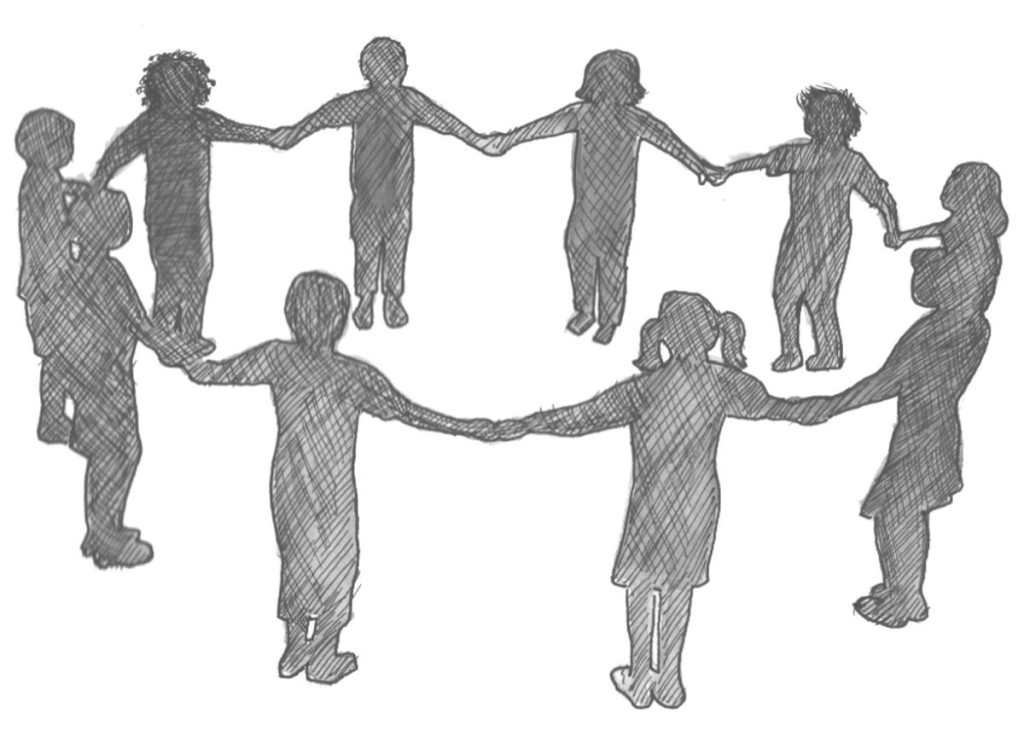
The major pro-social skill that is practiced in a cooperative game is, of course, cooperation. Because you need to work together to win in a cooperative game, players discover through their own sensory experience that cooperating makes us more productive. That is, cooperative play demonstrates in a very concrete way that “we’re better together”, that “many hands make like work” and that “many heads are better than one.”
Cooperative Games in Education
Do cooperative games have a role in education? It is easy to see that they do. As described above, cooperative games motivate players to want to cooperate and they also teach the cooperative skills needed to do it. The ability to cooperate has manifold applications in education.
Prep for Cooperative Learning Cooperative games prepare kids to take part in cooperative learning strategies and collaborative project-based learning because they give kids practice working and playing together.
Academic Subjects and Cooperative Games Cooperative games are of course playful and fun. Thus they tap the power of play in learning. The benefits of play in learning are well-documented. Play is especially crucial for learning in young children. Even Plato said over two thousand years ago: “Do not keep children to their studies by compulsion but by play.” More and more educational cooperative games are being developed for classroom learning, and the good ones combine the teaching power of both play and collaboration. So with educational cooperative games, students can learn language, math, science or other academic content at the same time that they practice cooperating. (See CooperativeGames.com for many free cooperative games, including cooperative games that teach academic subjects. Free classroom-ready games as well as games for purchase. Also you will find more cooperative games that teach academic subjects in The Cooperative Games Bullying Prevention Program by Suzanne Lyons.)
Social-and-Emotional Learning According to Maurice Elias, director of Rutgers University’s Social and Emotional Learning Lab, SEL is the process through which we learn to recognize and manage emotions, care about others, make good decisions, behave ethically an responsibly, and avoid negative behaviors. Teachers are looking for tools that teach social-and-emotional competence. Clearly, games that teach children how and why to get along together impart the social-and-emotional competencies Elias has identified.
Besides preparing students for cooperative learning, teaching academic subjects, and building social-and-emotional skills, cooperative games relate to other areas of education, from sustainability to special education. Indeed the applications are too many to enumerate in a single blog post! Check CooperativeGames.com for more discussion and resources related to all of the benefits and purposes of cooperative games in education https://cooperativegames.com/. However, we cannot end this introduction to cooperative games in education without giving at least a brief description of how they can prevent bullying. Bullying prevention is indeed the “killer app” for cooperative games.
Cooperative Games, School Climate, and Bullying
Bullying is a cruel torment and is all too common. It produces acute misery in the short term as well as aching wounds that can last a lifetime. Kids who are victims of bullying are five times more likely to be depressed compared to their peers. Kids who bully are also at high risk for serious negative consequences including social isolation, poor academic performance and later criminal behavior.
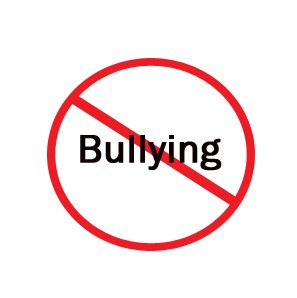
The U.S. Department of Health and Human Services has responded to the bullying crisis through its website StopBullying.gov, which is an extensive information portal for teachers and the public at large. The section Prevent Bullying offers a handful of guidelines to stop bullying before it starts. The guidelines for bullying prevention—as opposed to responding to bullying once it has occurred–relate to building a positive school climate.
What is a positive school climate? According to StopBullying.gov:
A positive school climate is a general atmosphere where students feel safe and a sense of belonging.
Cooperative games are inclusive by their very nature. Everyone belongs. No one is ever eliminated. If you need help when it is your turn, other players are there to support you. This feels psychologically safe. As well as safety, there is a sense of belonging too because players win or lose as a group. Working toward a common goal puts everyone on the same team.
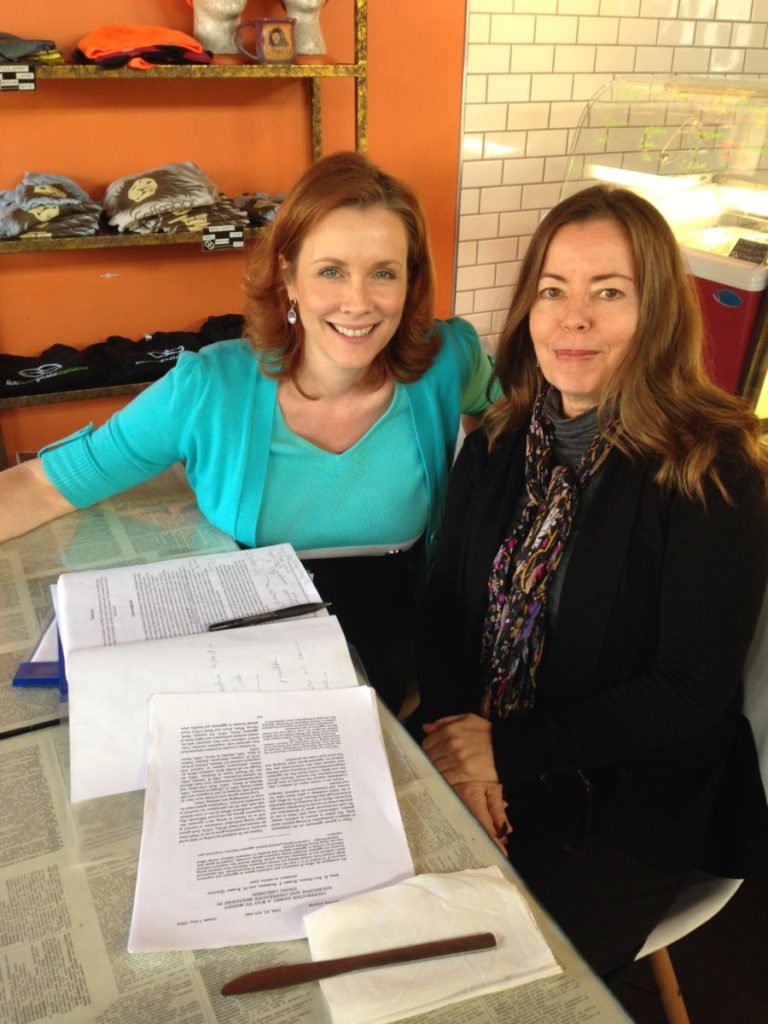
And there’s more! What can really make you feel unsafe and like you don’t belong? When others are mean and aggressive to you! Can cooperative games address even this problem—the problem of aggression? There is research that shows that playing cooperative games indeed reduces aggression. The consequences of this are profound and far-reaching and indeed pertain to all ages. The most specific research that shows cooperative games reduce aggression relates to young children however. A study by April Bay et. al. at the University of Nevada, Reno tested the effects of specific cooperative games on aggression in young children in 1994. Both during the games and afterward, children who played particular well-designed cooperative games exhibited more pro-social behavior (including sharing, showing affection, and helping one another) and less aggressive behavior (including hitting, kicking, and name-calling).
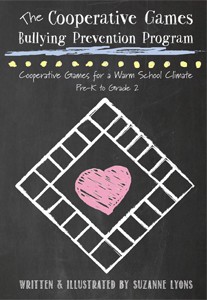
Thus, good cooperative games are a powerful means with which a teacher, parent or other adult who works with children can nurture a positive school climate and thus prevent bullying!
This is a novel approach. For all its common sense appeal and the research backing it up, cooperative games have not been applied to the bullying problem as yet. It’s a simple method, inexpensive, and with many side benefits. If this approach appeals to you, know that when you give it a try you are one of the early adopters. You’re bringing light into the dark world of bullying with the positive power of cooperation, kindness, and joy.
Contact Suzanne Lyons M.A. M.A. for webinars and workshops on cooperative games in education. Buy The Cooperative Games Bullying Prevention Program at CooperativeGames.com, on Amazon, and ibooks.
Successful Cooperative Games Booth at a Local Holiday Fair!


2016 is the first year that we hosted a booth selling cooperative board games at “Victorian Christmas”, our local holiday fair. This is Nevada City, California—a historic Gold Rush town that comes alive over the holidays. Locals and tourists love the cheerful mood and appreciate the story-book atmosphere. Even if you are not given to sentimentality throughout the year it is hard to resist the charm of this event, with its horse-drawn carriage, chestnuts roasting, carolers, crafters-a-plenty in their pop-up store-fronts and, in many years, a bit of snow to frost the streets in glistening white. Forget your cares, it’s the holidays!
charm of this event, with its horse-drawn carriage, chestnuts roasting, carolers, crafters-a-plenty in their pop-up store-fronts and, in many years, a bit of snow to frost the streets in glistening white. Forget your cares, it’s the holidays!
So, how was a booth selling cooperative board games received? Truly our CooperativeGames.com booth was super popular! It exceeded expectations. I (Suzanne Lyons, founder CooperativeGames.com) have been selling cooperative games through CooperativeGames.com since 2009. During that time, I have seen a big increase in the degree to which people are familiar with cooperative games, or at least are receptive to the concept. Seven years ago, cooperative games were a very esoteric genre, sometimes regarded with skepticism, as in “What a weird idea.”
But at the holiday street fair this year, it was heartening to see how many people know what cooperative games are, and have played them, 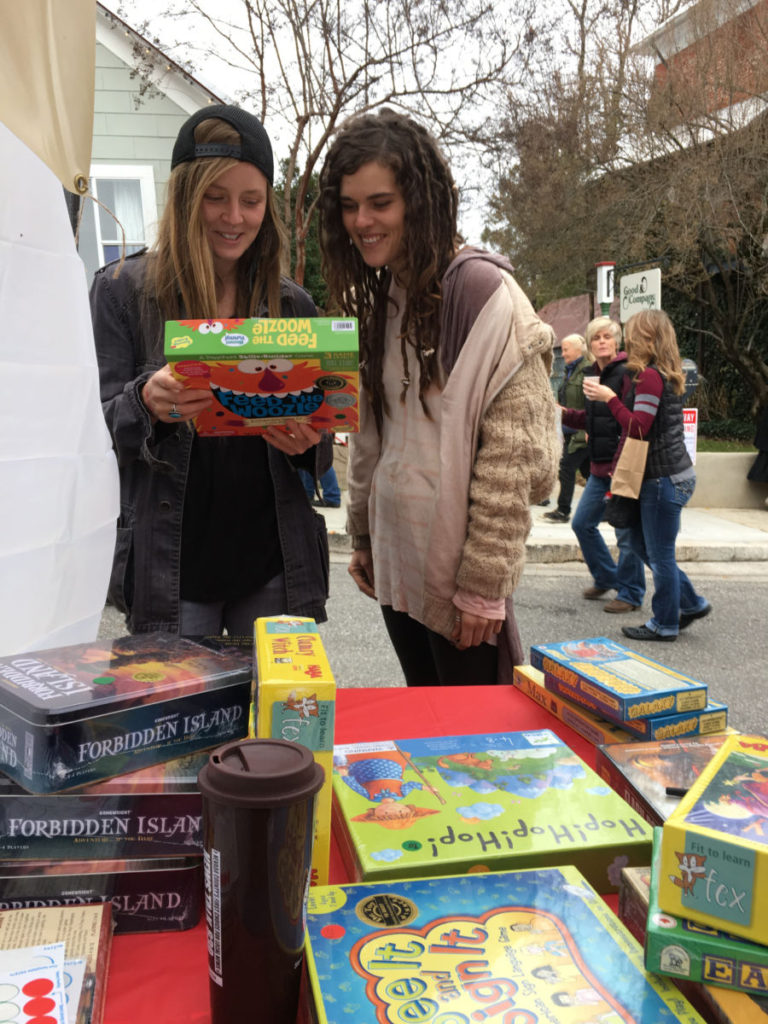 and are robust fans. There’s a lot of support for the whole idea of playing together not against each other. This year in 2016 many of us are looking for ways to bridge the gaps that divide us. It’s easy to see that cooperative games are a timely and effective method for getting there. And painless medicine to boot!
and are robust fans. There’s a lot of support for the whole idea of playing together not against each other. This year in 2016 many of us are looking for ways to bridge the gaps that divide us. It’s easy to see that cooperative games are a timely and effective method for getting there. And painless medicine to boot!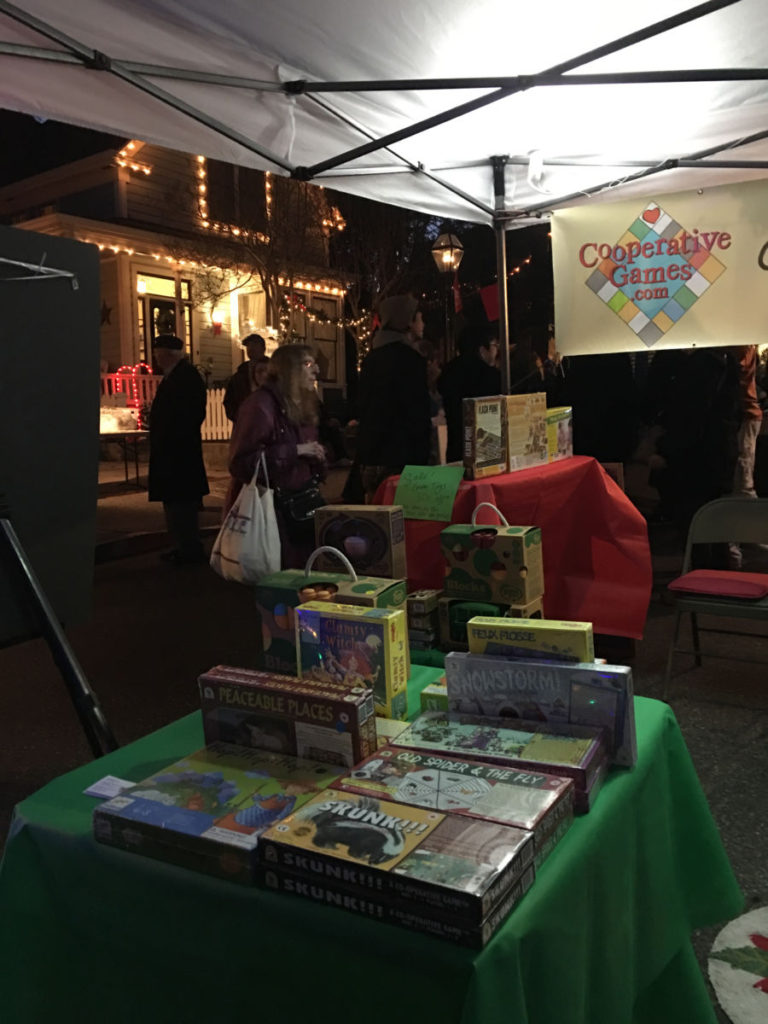
Besides running my own booth at our local holiday fair, in 2016 I helped The Lansing Peace Education Center with their own holiday fundraiser. They reported success and satisfaction, as described in their testimonial below. To like-minded organizations: This is an invitation. If you are interested in running a cooperative games table at your local fundraising event, please contact me, Suzanne Lyons, at CooperativeGames.com. The best way to reach me is by email at Suzanne@CooperativeGames.com. As a curator of the best cooperative games for all ages and settings, my goal is to spread knowledge about cooperative play and cooperative games, and to help organizations that serve the common good tap the magic of cooperative play too.
We at the Greater Lansing (Michigan) Peace Education Center organized a table of cooperative games for our annual Alternative Holiday Sale. Thanks to Suzanne Lyons of Cooperativegames.com for helping us pull together a selection of delightful games for all ages. It was eye-opening to many people that such games exist! We were so pleased to be able to get the word out and help foster more fun, friendly game-playing in many homes and schools. Having a few copies of Suzanne’s book was an added bonus that gave us a chance to talk about the benefits of teaching cooperative play.
Cooperative Games for Thanksgiving 2016
Thanksgiving is right around the corner. How about adding some cooperative games to your Thanksgiving celebration? Cooperative games are not only fun, but they facilitate happy and healthy relationships. I know of nothing better than playing cooperative games at family get-togethers to set a convivial mood and include everyone in the joy.
There are all kinds of cooperative games, as I describe on my website CooperativeGames.com https://cooperativegames.com/. For Thanksgiving, board games are very appropriate. How about bringing out some cooperative board games before dinner to keep guests ha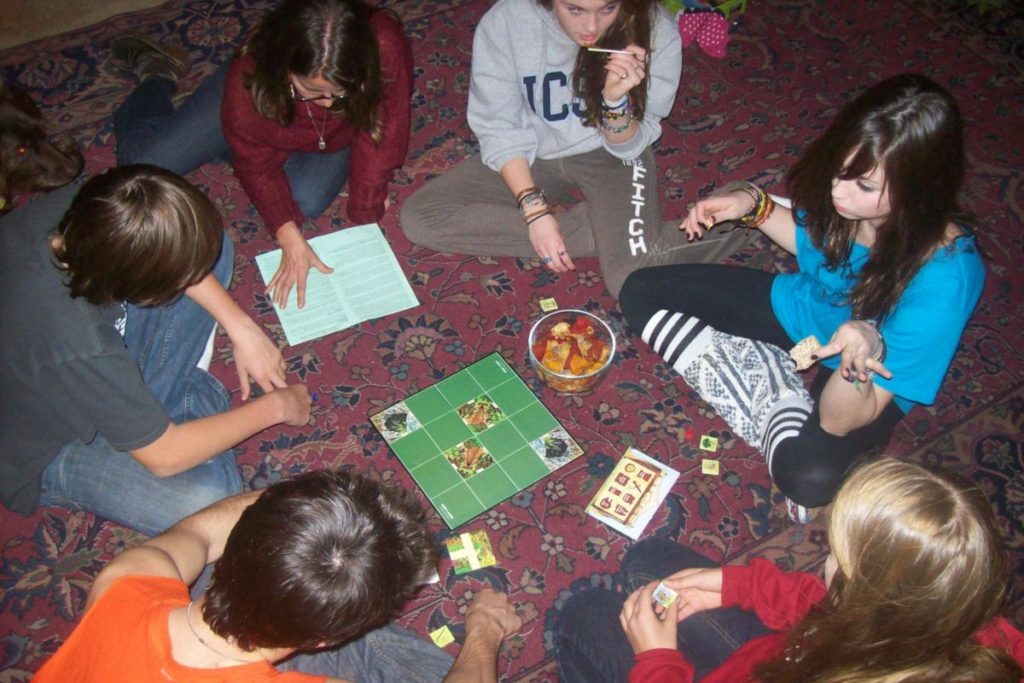 ppy while the cooks finish up in the kitchen? Or save them for relaxing after dinner when it’s time to get cozy on a full stomach.
ppy while the cooks finish up in the kitchen? Or save them for relaxing after dinner when it’s time to get cozy on a full stomach.
What are the best cooperative games for kids? For adults? For mixed ages? For children ages 4-8, I recommend the classic Max the Cat. For older kids, Caves and Claws is one of many good choices. For kids and adults playing together, consider Pandemic. Shop for these and many more games on my website CooperativeGames.com
If board games are not your thing, play some party games. (Again look to CooperativeGames.com for ideas https://cooperativegames.com/fun-free/) Here are some
Thanksgiving-themed cooperative games that require no materials at all….
- Basket of Plenty
Players sit around the dinner table. Pass around a small basket (or bowl) full of dried flowers, fruits, or favorite things—a cornucopia of your own making. The group recites this poem:
Basket of plenty, around you go-
Where you stop, nobody knows.
But when you do, one of us will say
What he is thankful for this day.
- Gobble-Happy
A player leaves the room while those left behind hide small treats or funny objects. When the player returns, the group guides him or her to the treat by saying “gobble, gobble” louder and louder as the player gets closet to the prize. Gobble very softly or not at all when the player is “cold” and raise the gobbling to a happy cacophony as the player nears the sought-after object.
- Thanksgiving Joke-a-Thon
Put two strips of paper under each dinner plate. One strip has a joke, and the other has a punch line to a different joke. On each player’s turn, she reads her joke. The player who thinks he has the punch line reads it. Sometimes it’s hard to tell what the correct punch line is, but mismatched jokes and punch lines are part of the fun! Here are some corny Thanksgiving jokes and punch lines you can use.
Why was the turkey the drummer in the band?
Because he had the drumsticks.
If April showers bring May flowers, what do May flowers bring?
Pilgrims.
What has feathers and webbed feet?
A Turkey wearing scuba gear.
What key has legs and can’t open doors?
A turkey.
What kind of vegetable do you like on Thanksgiving?
Beets me!
Why can’t you take a turkey to church?
Because they use such FOWL language.
Can a turkey jump higher than the Empire State Building?
Yes – a building can’t jump at all.
Who is not hungry at Thanksgiving?
The turkey because he’s already stuffed!
What does Dracula call Thanksgiving?
Fangs-giving.
Which side of the turkey has the most feathers?
The outside.
What kind of music did the Pilgrims like?
Plymouth Rock.
Why did the police arrest the turkey?
They suspected it of fowl play.
What did the turkey say before it was roasted?
Boy! I’m stuffed!
Where did the first corn come from?
The stalk brought it.
How did the Mayflower show that it liked America?
It hugged the shore.
Why did the turkey cross the road?
It was the chicken’s day off.
The Cooperative Games Blog: The Green Team
The Cooperation Chronicles Episode 1: The Green Team
People sometimes ask: Why play cooperative games?  One answer is that cooperative games teach cooperation. But then, what’s so great about cooperation?
One answer is that cooperative games teach cooperation. But then, what’s so great about cooperation?
Today we’re launching a blog series called The Cooperation Chronicles to answer that question. Cooperation is a rather unsung virtue in the culture these days. Rather than peaceful and productive cooperation, we often glorify competition with its dramatic contests, winners and losers, ups and downs, and inherent adrenaline rush. Competition is telegenic; cooperation less so. So in this little blog series, The Cooperation Chronicles, we are going to profile true stories of human cooperation. These stories are meant to warm the heart and remind us all of the wonders of working and playing together.
 Today’s Cooperation Chronicle profiles The Green Team, four middle-school girls in Coral Gables,Florida and the movement they started at their school to save energy. Their initiative was successful in the extreme with win-win effects all over the place for everyone.
Today’s Cooperation Chronicle profiles The Green Team, four middle-school girls in Coral Gables,Florida and the movement they started at their school to save energy. Their initiative was successful in the extreme with win-win effects all over the place for everyone.
Maddi Cowen, Larissa Weinstein, Nicole Matinez, and Melissa Quintana were alarmed about sea level rise in their region of Florida due to climate change. They wondered if there was anything they could do. The girls got serious about working with one another and with other people in their school and community toward a common goal. The Green Team, a school-based organization whose mission was to mitigate climate change by reducing energy consumption at the school level, was born.
Sea-level rise is a severe threat to Miami. As Maddi herself states, the economic losses projected to occur in Miami due to sea-level rise are greater than losses at any other coastal city in the world.
The Green Team started by going around from homeroom to homeroom gathering interested students to do small things to save energy such as turning off lights and computers when not in use. Soon, school officials were working with the kids and bigger steps were taken.  Air conditioners got switched off in favor of opening doors, a recycling program was launched, and the school roof was even painted white. The school formed a collaboration with a local non-profit Dream In Green, which supplied resources and assistance for the school-wide energy-saving campaign. Again quoting Maddie, “We didn’t just do this ourselves. We built an entire network with faculty, administration, students and other members of the community…Going green is a win-win situation for everybody” Principal Libby Gonzales commented on the degree of community mindedness when she said “Not only are we making a change at the school level, but we are trying to make a change city-wide, nation-wide, world-wide.” To date, the Green Team initiative has saved over $50,000 for George Washington Carver Middle School in Coral Gables Florida by reducing resource consumption. More importantly, they have contributed to the overall global shift toward sustainability.
Air conditioners got switched off in favor of opening doors, a recycling program was launched, and the school roof was even painted white. The school formed a collaboration with a local non-profit Dream In Green, which supplied resources and assistance for the school-wide energy-saving campaign. Again quoting Maddie, “We didn’t just do this ourselves. We built an entire network with faculty, administration, students and other members of the community…Going green is a win-win situation for everybody” Principal Libby Gonzales commented on the degree of community mindedness when she said “Not only are we making a change at the school level, but we are trying to make a change city-wide, nation-wide, world-wide.” To date, the Green Team initiative has saved over $50,000 for George Washington Carver Middle School in Coral Gables Florida by reducing resource consumption. More importantly, they have contributed to the overall global shift toward sustainability.
This is a story of climate change, but not just in the sense of mitigating global warming. It’s also a happy tale about climate change in the sense of changing school climate, for the Green Team project fostered a positive sense of community within the school, replacing fear, apathy, and separation with unity and mutual appreciation.
You can watch a free video of this story, called Dreaming In Green, at the Young Voices for the Planet website. Here is the link http://www.youngvoicesonclimatechange.com/movie_dreaming.php
oxoxoxoxoxoxoxoxoxoxoxoxoxoxoxoxoxoxoxoxoxoxoxoxoxoxoxxoxoxoxoxoxoxxooxx
The Cooperative Games blog is the random musings of a cooperative games aficionado,
educator, and proponent of the cultural shift toward we not just me. I’m Suzanne Lyons, founder of CooperativeGames.com. Come on in, pull up a chair, and let’s chat!
oxoxoxoxoxoxoxoxoxoxoxoxoxoxoxoxoxoxoxoxoxoxoxoxoxoxoxoxoxoxoxoxxoxoxooxxo
Teachers: Note that there is a free Dreaming In Green curriculum that you can use in conjunction with the video of this story. Check it out! Again go to: http://www.youngvoicesonclimatechange.com/movie_dreaming.php Also, I myself co-authored a climate-change teaching manual with Lynne Cherry, producer of the Young Voices for the Planet films and Juliana Texley PhD, current President of the NSTA. Our book is called Empowering Young Voices for the Planet, published in 2014 by Corwin Press. It’s full of win-win stories of kids working together to help the environment, as well as hands-on activities for your students that support those stories.
- 1
- 2
- 3
- 4
- Next Page »

